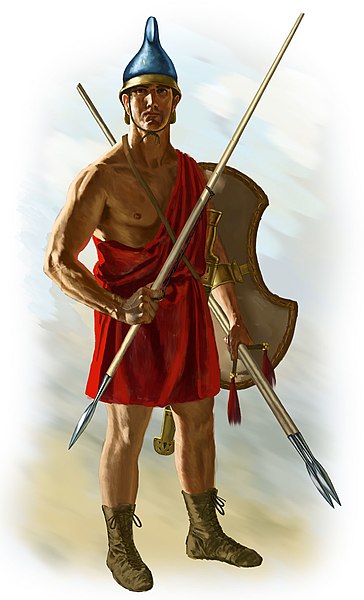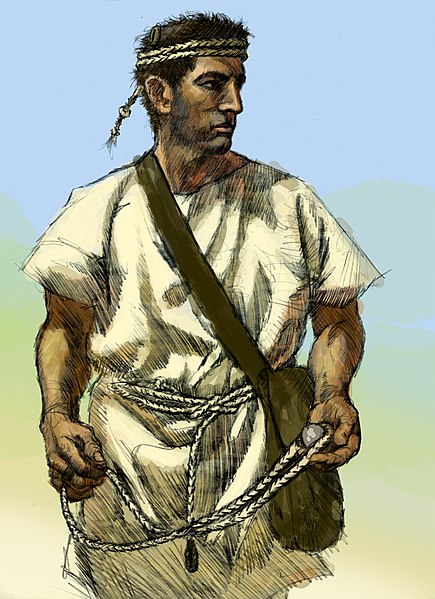Skirmishers are light infantry or light cavalry soldiers deployed as a vanguard, flank guard or rearguard to screen a tactical position or a larger body of friendly troops from enemy advances. They are usually deployed in a skirmish line, an irregular open formation that is much more spread out in depth and in breadth than a traditional line formation. Their purpose is to harass the enemy by engaging them in only light or sporadic combat to delay their movement, disrupt their attack, or weaken their morale. Such tactics are collectively called skirmishing.
As with most other modern foot soldiers, the US 6th Marine Regiment, on patrol near Marjah, 2010, routinely uses skirmish formation.
An Agrianian peltast holding three javelins, one in his throwing hand and two in his pelte hand as additional ammunition
Slinger from the Balearic islands, famous for the skill of its slingers
Austrian Jäger around 1800, showing the relatively drab uniforms of soldiers specializing in skirmishing in Napoleonic times, as an aid in using cover
Light infantry refers to certain types of lightly-equipped infantry throughout history. They have a more mobile or fluid function than other types of infantry, such as heavy infantry or line infantry. Historically, light infantry often fought as scouts, raiders, and skirmishers. These are loose formations that fight ahead of the main army to harass, delay, disrupt supply lines, engage the enemy's own skirmishing forces, and generally "soften up" an enemy before the main battle. Light infantrymen were also often responsible for screening the main body of a military formation.
Portuguese Army light infantryman (caçador) of the Peninsular War.
Agrianian peltast, c. 4th century BC
French light infantry in the woods during the Napoleonic era, by Victor Huen.
The pioneer company of the 27th Jäger Battalion returning from a parade in Liepāja (Libau) in 1917.







